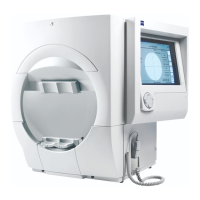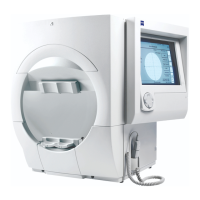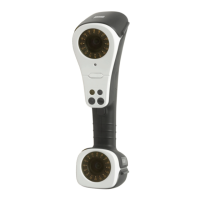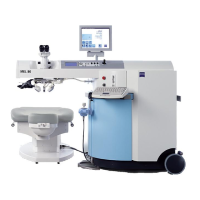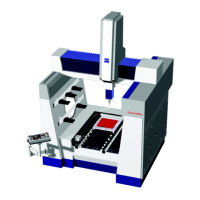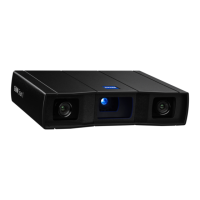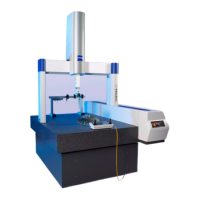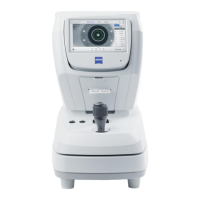HFA3 Instructions for Use 2660021166131 Rev. A 2018-11
Data, Tests & Reports Go to Contents
6-12
cáÖìêÉ=SKQ=qÜêÉÉ=få=låÉ
Report Features
Reliability Indices
Blind Spot Errors (Fixation Losses/FL)
Blind Spot Errors are recorded when Blind Spot monitoring is active and occur when a patient
r
esponds to a stimulus presented in the blind spot. The number of responses is recorded over the
total number of stimuli presented. A high error rate may mean poor patient fixation during the test
or that the blind spot was located incorrectly. Fixation Losses
> 20% are indicated by a double X.
False Positives (FP)
False Positive errors occur when a patient responds too quickly to a stimulus or in the absence of a
stimulus. In SITA tests False Positives are not calculated until the end of the test and a percentage
>
15% will be indicated by a double X. A percentage > 33% will be indicated for non-SITA tests. A
high score suggests that the patient may be overly concerned about not seeing all the stimuli.
Patients that respond inappropriately may also have abnormally high threshold results.
False Negatives (FN)
A False Negative is recorded if the patient does not respond when a stimulus is repeated at a
particular location and at a level much brighter than has already been seen.
Note: Reports will display only one message with the priority given t
o high False Positives and the
message “Excessive High False Positives”. Otherwise, the message
“Low Test Reliability” is displayed
on SITA test reports if Fixation Losses are
> 20%. For non-SITA tests, the same message will display
if either the number of Fixation Losses are
> 20% or False Negatives are > 33%.
Grayscale and Numeric Formats
The Grayscale format depicts the size and depth of any
present field defects. Each pattern variation
corresponds to a 5 dB change in sensitivity. The comparative scale in T
able 4-2 displays the ten (10)
Grayscale patterns and relates them
to decibels and apostilbs.
Note: The Grayscale in SWAP printouts often looks significantly darker because SWAP testing
normally generates lower threshold sensitivity valu
es than does white-on-white testing. The
maximum (0 dB) stimulus in SWAP testing is 6 foot-lamberts, not 10,000 apostilbs.
Total Deviation Plots
The numeric values in the upper total deviation plot represents the difference in decibels (dB)
between the patient’s test results and the age-corrected normal values at each tested point.
The lower total deviation plot, called a probability plot, tr
anslates the values from the upper plot
into shaded symbols indicating the highlights points falling below specific percentile levels
1 – Reliability Indices 3 – Defect Depth
2 – Grayscale Results 4 – Numeric (dB) Results
SYM
ASB
0.8–
0.1
2.5–1 8–3.2 25–10 79–32 251–
100
794–
316
2512–
1000
7943–
3162
>
10000
DB
41–50 36–40 31–35 26–30 21–25 16–20 11–15 6–10 1–5 < 0
Table 6-2 Grayscale Symbols and Numerical Equivalents in Apostilbs (ASB) and Decibels (dB).
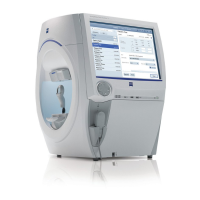
